
Astor Pantaleón Piazzolla was an Argentine tango composer, bandoneon player, and arranger. His works revolutionized the traditional tango into a new style termed nuevo tango, incorporating elements from jazz and classical music. A virtuoso bandoneonist, he regularly performed his own compositions with a variety of ensembles. In 1992, American music critic Stephen Holden described Piazzolla as "the world's foremost composer of Tango music".

The bandoneon is a type of concertina particularly popular in Argentina and Uruguay. It is a typical instrument in most tango ensembles. As with other members of the concertina family, it is held between the hands, and played by pulling and pushing air through bellows, routing it through sets of tuned metal reeds by pressing the instrument's buttons. Unlike most accordions, bandoneons always employ the same sets of reeds to produce their sound, and do not usually have the register switches common on accordions. Nevertheless, the bandoneon can be played very expressively, using various bellows pressures and other techniques.

Gerald Joseph Mulligan, also known as Jeru, was an American jazz saxophonist, clarinetist, composer and arranger. Though primarily known as one of the leading jazz baritone saxophonists—playing the instrument with a light and airy tone in the era of cool jazz—Mulligan was also a significant arranger working with Claude Thornhill, Miles Davis, Stan Kenton, and others. His piano-less quartet of the early 1950s with trumpeter Chet Baker is still regarded as one of the best cool jazz ensembles. Mulligan was also a skilled pianist and played several other reed instruments. Several of his compositions including "Walkin' Shoes" and "Five Brothers", have become standards.
Nuevo tango is both a form of music in which new elements are incorporated into traditional tango music, and an evolution of tango dance that began to develop in the 1980s.
Norteño is a Canadian "Tango nuevo" quintet from Ottawa, Ontario. It consists of Pierre-Paul Provencher (bandoneon), Laurie Rosewarne (piano), Geneviève Petit (violin), Rémi Barrette, and Tobias Meis.

Maria Ilva Biolcati, OMRI, known as Milva, was an Italian singer, stage and film actress, and television personality. She was also known as La Rossa, due to the characteristic colour of her hair, and additionally as La Pantera di Goro, which stemmed from the Italian press having nicknamed the three most popular Italian female singers of the 1960s, combining the names of animals and the singers' birthplaces. The colour also characterised her leftist political beliefs, claimed in numerous statements. Popular in Italy and abroad, she performed on musical and theatrical stages the world over, and received popular acclaim in her native Italy, and particularly in Germany and Japan, where she often participated in musical events and televised musical programmes. She released numerous albums in France, Japan, Korea, Greece, Spain, and South America.
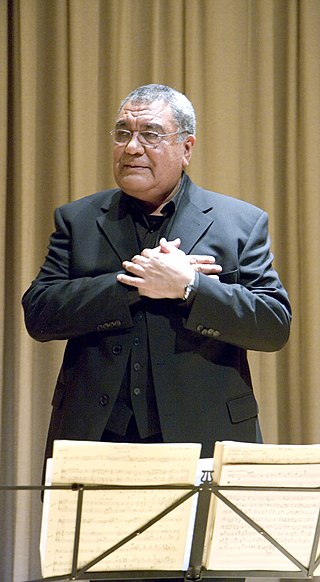
Timoteo "Dino" Saluzzi is an Argentinian bandoneon player. He is the son of Cayetano Saluzzi and the father of guitarist José Maria Saluzzi.
Adiós Nonino is a composition by tango Argentine composer Ástor Piazzolla, written in October 1959 while in New York, in memory of his father, Vicente "Nonino" Piazzolla, a few days after his father's death.
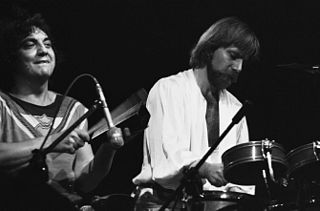
Tullio De Piscopo is an Italian drummer, percussionist and singer- songwriter.

Libertango is a composition by tango composer and bandoneon player Astor Piazzolla, recorded and published in 1974 in Milan. The title is a portmanteau merging "Libertad" and "tango", symbolizing Piazzolla's break from classical tango to tango nuevo.
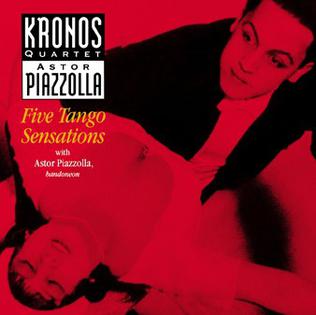
Five Tango Sensations is a suite of works (Asleep—Loving—Anxiety—Despertar—Fear) for bandoneón and string quartet written in 1989 by Argentine composer Ástor Piazzolla. It was premiered in New York that year and recorded immediately afterwards by the Kronos Quartet and the composer, who played the bandoneón. The record was one of a set of three internationally tinged albums released simultaneously, the Argentine music of this album being accompanied by the music of South-African composer Kevin Volans on Kevin Volans: Hunting:Gathering and the music of Polish composer Witold Lutosławski on Witold Lutosławski: String Quartet.
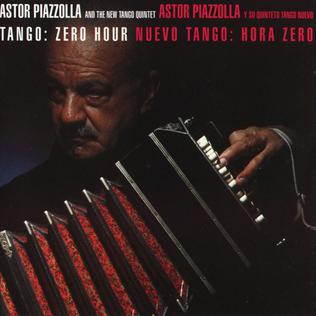
Tango: Zero Hour is an album by Ástor Piazzolla and his Quinteto Nuevo Tango. It was released in September 1986 on American Clavé, and re-released on Pangaea Records in 1988.
Nuevo Tango Ensamble is an Italian tango-jazz trio which was founded in 1999. The members are Pasquale Stafano who plays piano, Gianni Iorio on bandoneón and Pierluigi Balducci on bass.
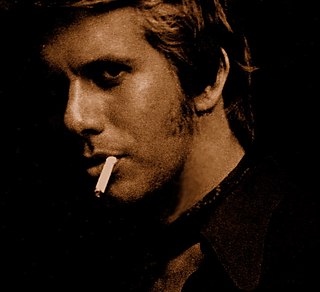
Giuseppe Prestipino Giarritta, professionally known by his pseudonym Pino Presti, is an Italian bassist, arranger, composer, conductor and record producer from Milan. He is a 5th-dan black belt in Shotokan Karate.
Juan José Mosalini was an Argentinian bandoneon player. He specialized in tango nuevo and resided in France.

The Octeto Buenos Aires was a legendary tango group formed in 1955 by the Argentine bandoneon player Astor Piazzolla. In 1958 the Octeto was disbanded and Piazzolla returned to New York City with his family where he struggled to make a living as a musician and arranger in the next stage of his career that would prove to be so ground-breaking in the history of tango.
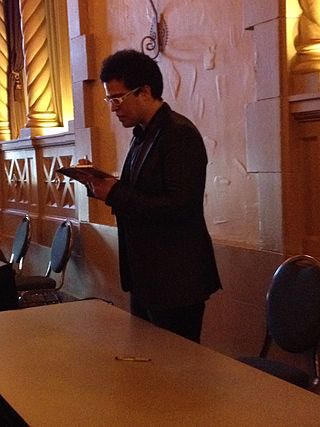
Juan Pablo Jofre is an Argentinian musician, composer, and arranger. He plays the bandoneon.
Cumbre, Spanish for 'Peak' or 'Summit', is an element in various place and other names, most often in the forms La Cumbre or Las Cumbres.

Oscar López Ruiz was an Argentine guitarist, composer, arranger and record producer.

The Rough Dancer and the Cyclical Night (Tango Apasionado) is an album by the Argentinian musician Astor Piazzolla. It was released in 1988. The album was reissued by Nonesuch Records in the late 1990s.
















